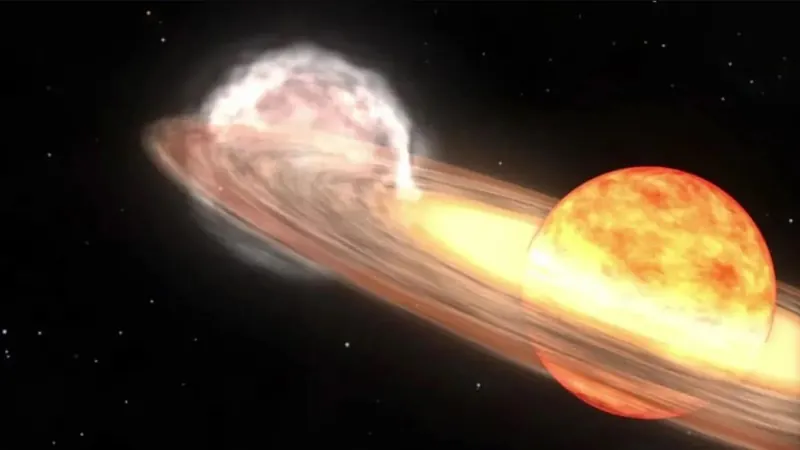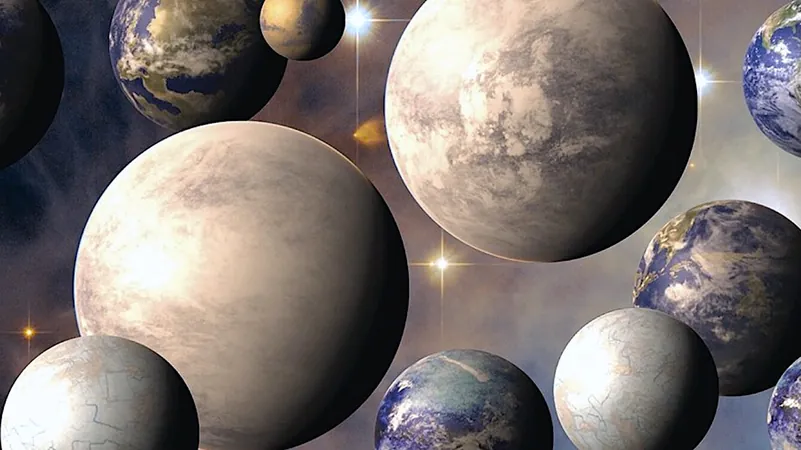
Brace Yourself! T Corona Borealis Could Explode Soon: Witness a Rare Nova Phenomenon!
2025-04-01
Author: Nur
Brace Yourself! T Corona Borealis Could Explode Soon: Witness a Rare Nova Phenomenon!
Astronomers worldwide are on high alert as they closely monitor T Corona Borealis, a fascinating binary star system located in the Northern Crown constellation, for signs of a rare and spectacular stellar eruption. This system comprises a white dwarf and a red giant star that are locked in an intricate dance, with the white dwarf siphoning off material from its larger companion. Over time, the accumulation of this material can set the stage for a dramatic thermonuclear explosion, commonly known as a Nova. The last eruption recorded from this unique stellar duo was in 1946, and recent observations suggest we may be on the brink of witnessing another explosive event.
A series of notable changes has caught the attention of astronomers, including a significant brightening event in 2015, which was followed by a dimming in 2023. This pattern mirrors what occurred prior to its most recent eruption, raising hopes and expectations that we could soon see another outburst. If this happens, T Corona Borealis may shine brightly in our night sky, potentially becoming as luminous as some of the most famous stars.
Accretion Activity and Predictions of a Stellar Eruption
According to a recent study published in the Monthly Notices of the Royal Astronomical Society, T Corona Borealis has been displaying behavior akin to that observed in the years preceding its former eruptions. It is noteworthy that this binary system is one of only eleven recurrent novae documented in astronomy, with prior eruptions recorded in 1217, 1787, 1866, and most recently, 1946. Experts point to the heightened activity in the accretion disc surrounding the white dwarf—intensifying from 2015 to 2023—as a critical sign that an eruption could occur within the next year or two.
Astrophysicists have proposed multiple potential dates for the nova outburst based on detailed orbital analyses, suggesting periods ranging from as soon as March 27 to as late as November 10 this year, or possibly even June 25, 2026. While some researchers have speculated about a third celestial object impacting the binary system's dynamics, established astronomers, including Dr. Léa Planquart from the Université de Strasbourg and Dr. Jeremy Shears from the British Astronomical Association, have dismissed this theory due to the lack of supporting evidence. They firmly believe that the increased activity of the accretion disc remains the most plausible explanation for the imminent potential eruption.
As the astronomical community holds its breath, stargazers are urged to keep an eye on the skies over the coming months. Should this anticipated nova event occur, it will not only provide a captivating spectacle but also invaluable insights into the processes that govern stellar evolution and explosions. Don't miss out on the chance to witness a rare, cosmic event that might just light up the night!


 Brasil (PT)
Brasil (PT)
 Canada (EN)
Canada (EN)
 Chile (ES)
Chile (ES)
 Česko (CS)
Česko (CS)
 대한민국 (KO)
대한민국 (KO)
 España (ES)
España (ES)
 France (FR)
France (FR)
 Hong Kong (EN)
Hong Kong (EN)
 Italia (IT)
Italia (IT)
 日本 (JA)
日本 (JA)
 Magyarország (HU)
Magyarország (HU)
 Norge (NO)
Norge (NO)
 Polska (PL)
Polska (PL)
 Schweiz (DE)
Schweiz (DE)
 Singapore (EN)
Singapore (EN)
 Sverige (SV)
Sverige (SV)
 Suomi (FI)
Suomi (FI)
 Türkiye (TR)
Türkiye (TR)
 الإمارات العربية المتحدة (AR)
الإمارات العربية المتحدة (AR)